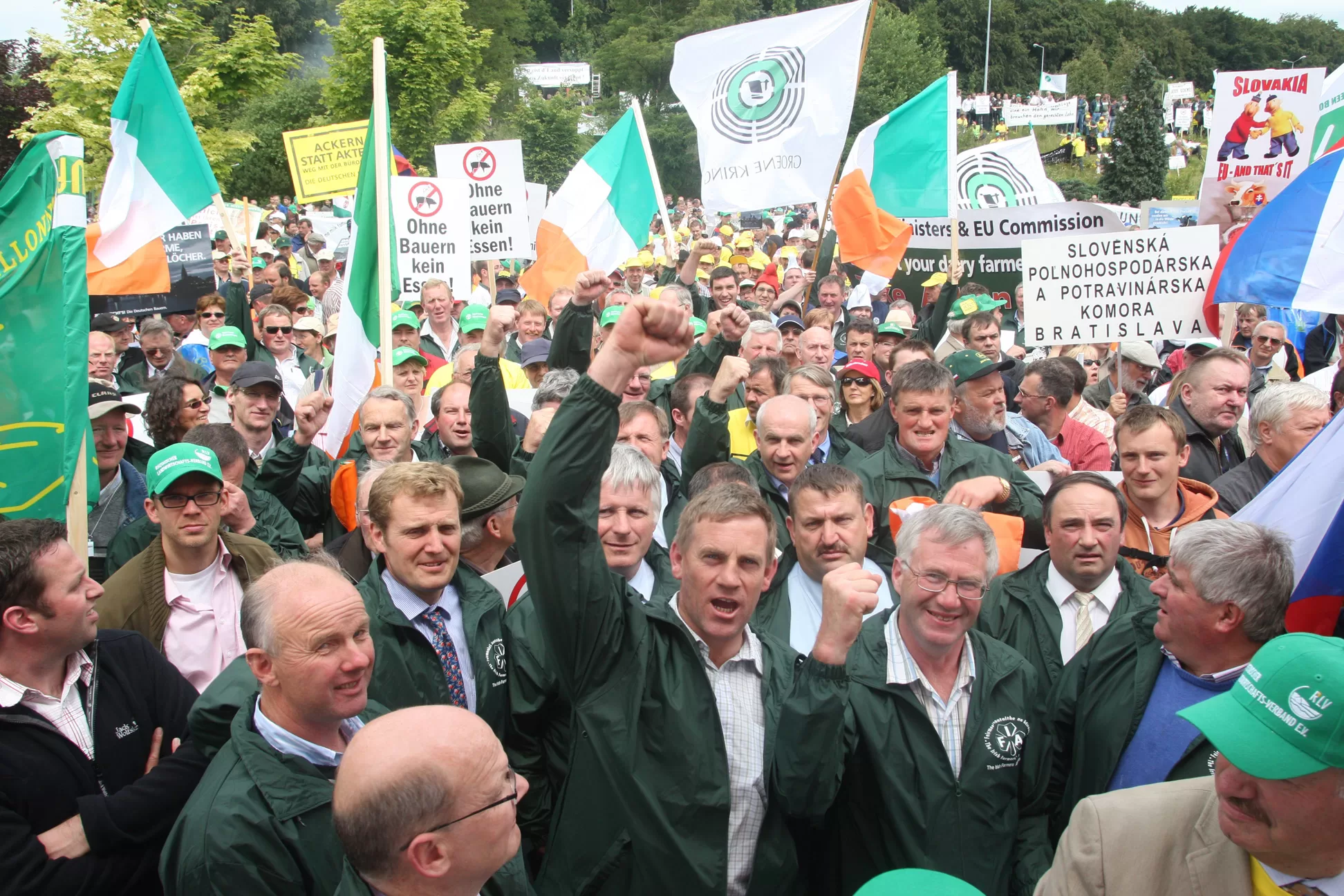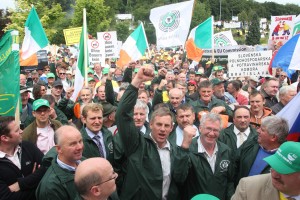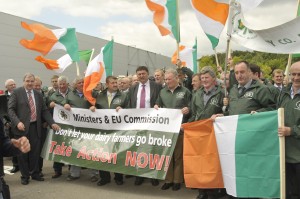In a bad year, I asked my father why farmers seldom protest their political circumstances. He gave me what I later termed the “Take Care of Your Own Corner” speech, explaining that the most a man can achieve is to do the best with what he was given, and that a person can give up all that he has for a principle only for it to be taken away with the stroke of a pen. I didn’t want to agree with him, and I still haven’t. The conversation suggested to me not a resistance to change, but the resignation to the difficult conditions my father and others like him were asked to make a life in. That’s what interested me in Thomas Kriger’s account of the 1930s milk strike in New York. A rare time in a region’s history a mass of farmers were driven to resist their place in the status quo, endanger their farm’s welfare in doing so, and laid themselves in the path of their tyrant.
2009 marked a change in the farmer’s relationship to his government. The angry farmer that quietly shook his head from his place at the bottom can now be found in the street, shaking his fist. The end June brought a second strike by nearly
2,000 Czech dairy farmers. Organised by Jan Veleba, the president of the Czech Agrarian Chamber, 200 tractors closed twenty highways across the country, immobilising the republic’s highway system. Milk fell from nine crowns per litre to six, a situation farmers hold against their Ministry of Agriculture. They demanded a minimum purchase price for their milk, and threatened to take over the warehouses of retail chains if left unsatisfied.
A month later, Belgian farmers brought similar anger to the doorstep of Mariann Fischer Boel, EU Agriculture Commissioner. EU milk fell from 40 eurocents per litre to an average of 20 cents, forcing many farmers to sell milk below the cost of production. Farmers drove tractors up to the riot police, who stood behind barb wire and were armed with water cannons on all roads leading to the EU headquarters. Farmers asked to lower production limits and lessen market supply, a practice the EU is drifting from as they phase out milk quotas by 2015. Boel denied their request. Instead, she recommended the government promote the culling of large dairy herds to reduce overall production, a practise similar to the Cooperatives Working Together programme in The States that has seen minimal success.
The Bulgarian government failed to pay their farmers the subsidies owed from April to July 2008, a Bulgarian media site reported. On August 13th, farmers protested in Sofia and gave the Agriculture Ministry one week to even up. One week later the Shipka mountain pass, the main thoroughfare between the northern and southern halves of the country, was closed. Strikes spread across the country and were joined by their Romanian neighbours. One road had 400 litres of goat milk spilled over it. The farmers vowed to protest every week until the payments were made.
Every country has its reports of campaigning dairymen. Canadian farmers pulled their tractors in front of Parliament Hill several times and demanded that Prime Minister Stephen Harper take immediate action. Some never left the first protest. In Limerick, Ireland 50 irate farmers swarmed Minister Willie O’Dea’s car. Members of the Irish Farmers Association, they raised their objection to cutbacks and cancellation of necessary rural funding. They banged on the Minister’s door and demanded he answer to them. Weeks later, a protest was staged in Athlone. “There’s a lot of anger here,” IFA Representative Barry Donnelly said, at the scene of the demonstration. “Irish farmers feel that their government has turned their back on them. Civil servants are protecting their own pay checks while the farmer is left out.” They called for the cuts to be reversed and promised further strike.
Dairy organisations have also found themselves in a new role, feeling the pressure to meet the needs of their members. Holstein Association USA has proposed the Dairy Price Stabilization Program (DPSP) in an effort to minimise price volatility. The plan is similar to the milk quota system the EU is presently phasing out. On June 2nd, a large coalition of UK associations and unions sent a poignant letter to the nation’s retailers, calling on them to secure the future of British milk. On June 3rd their problems got a lot bigger. Dairy Farmers of Britain, a co-op of 1,800 members that controlled over 10% of the nation’s milk, ceased operations and went into receivership. Members of DFOB were left without payment for the previous month’s milk and a place to sell what was in their bulk tank. A sudden alliance of organisations emerged to deal with the catastrophe. The National Farmer’s Union (NFU), English Farming and Food Partnerships (EEFP), and Dairy UK joined together to aid farmers who didn’t find a new buyer for their milk, particularly farms with lower milk output and those in remote locations that would be the least attractive to large coops. The organisations formed a linkage scheme to allow farmers to connect with smaller, specialist buyers who might be the most likely to take on new suppliers.
We’re all waiting on the milk price. In the meantime, we’re party to one of the largest turnovers of officials, ideas, and attitudes the industry has seen in recent times. But the change that may be more subtle and harder to quantify in a post-collapse dairy industry is the farmer himself. We will wait to see what a man who drove his tractor to the doors of the administration expects from his government from here on out. We’ll keep an eye out to see how this government treats the farmer in turn.



